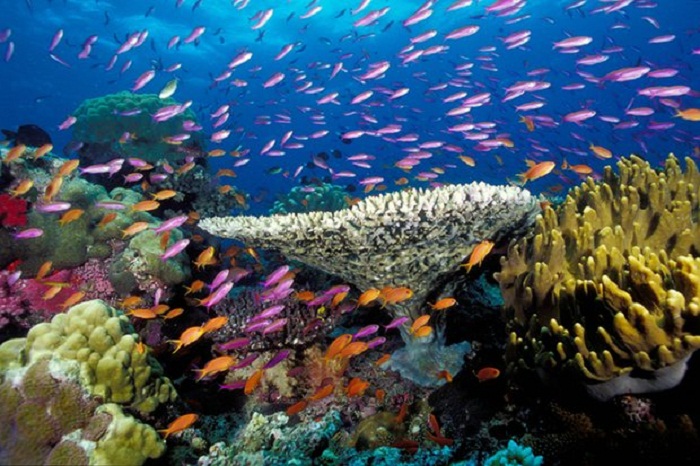Rising carbon emissions could kill off vital corals by 2100, study warns

The study, conducted on Heron Island with reef and chemical ecology experts from the University of Queensland and the US, predicts that “business as usual” emissions would significantly harm vital corals by 2050 and kill them off by 2100.
The researchers said their findings, which shed new light on the competitive advantage seaweeds enjoyed over corals in seawater with rising carbon concentrations, had global implications as one of the most damaging seaweeds was found in reefs worldwide.
And the futility of trying to remove seaweeds that had the ability to regrow meant the problem could be tackled only by cutting carbon emissions, they said.
Guillermo Diaz-Pulido, a Griffith University associate professor, said the research was “a major step forward in understanding how seaweeds can harm corals and has important implications for comprehending the consequences of increased carbon dioxide emissions on the health of the Great Barrier Reef”.
Scientists previously knew that increased carbon in the atmosphere – which is absorbed by oceans, making them more acidic – affected the behaviour of seaweed.
But the study’s co-author Mark Hay, a professor from the Georgia Institute of Technology, said the discovery here was that greater carbon concentrations led to “some algae producing more potent chemicals that suppress or kill corals more rapidly”, in some cases in just weeks.
“If the algae overtake the coral, we have a problem which contributes to reef degradation, on top of what we already know with coral bleaching, crown of thorn starfish outbreaks, cyclones or any other disturbance,” Hay said.
Diaz-Pulido said a common brown algae species found in reefs worldwide was shown to be among those that caused the most damage.
“That’s a problem because if this algae takes advantage of elevated CO2 in seawater that’s even more a matter of concern,” he said.
Diaz-Pulido said the “scale of the problem is so big, removing a bunch of seaweed from the reef isn’t going to do much because it just regrows and regenerates”.
That is in contrast to human interventions on other coral threats such as the crown of thorns starfish, where local eradication programs have had success.
Diaz-Pulido said his conclusion was that “the way to address this really is to reduce the levels of CO2 in the atmosphere”.
The research at Heron Island, a coral cay north-east of Gladstone at the southern end of the reef, used underwater reef experiments and outdoor lab studies.
“For the algae to grow they need light and CO2, just like any other plant, and because algae in the future would be exposed to much more CO2 in seawater we wanted to know to what extent the CO2 would affect some of the things algae do, the physiology and the interaction with animals,” Diaz-Pulido said.
The study was published on Thursday in the Nature journal’s Scientific Reports, and involved collaboration with Peter Mumby, a University of Queensland professor.















































